Trained and monitored freshwater health through STREAM (Sequencing the Rivers for Environmental Assessment and Monitoring).
Find the perfect gift for wildlife lovers. SHOP NOW
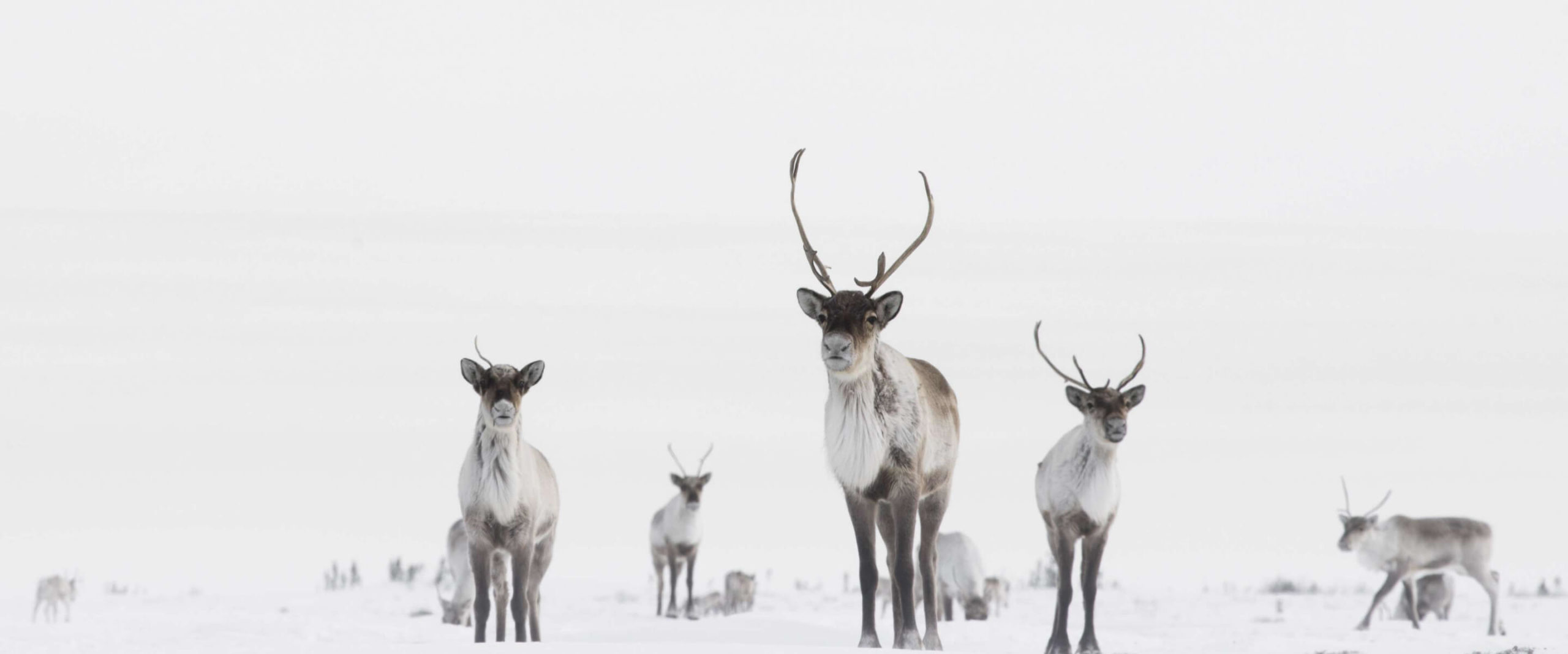
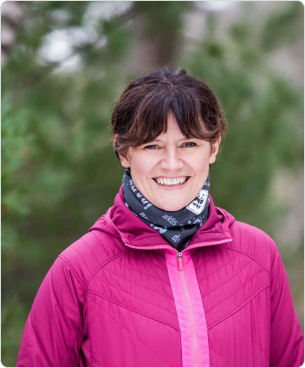
Thanks to our amazing donors, partners and volunteers, WWF-Canada has been taking a stand every single day for our planet and the future of all life on Earth.
We work hard to protect everything from the tiny capelin that sustain so many Atlantic species to the West Coast’s 73 remaining southern resident killer whales, the Arctic’s barren-ground caribou that, in some herds, have declined by more than 95 per cent, and Canada’s vast landscapes, rivers, lakes and coastlines.
Our environment is facing unprecedented challenges from climate change and biodiversity loss. Canada is warming at twice the global average, and the Arctic at three times, while half of monitored species in Canada have declined by an average of 83 per cent between 1970 and 2014.
At WWF-Canada, we’re seeking evidence-based solutions and Indigenous knowledge to address these dual crises. It’s been a busy year, and here’s a look at some of the important progress we’ve made:
With your support, WWF-Canada will continue our work to reverse wildlife decline, enrich coastal zones and land cover in urban regions and priority wilderness areas to help reduce greenhouse gas emissions, and support resilient communities that thrive along with the environment. Together, we can build a healthy future – for today and tomorrow.
Thank you for putting nature first.
Megan Leslie
President and CEO
World Wildlife Fund Canada
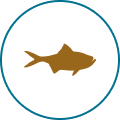
Trained and monitored freshwater health through STREAM (Sequencing the Rivers for Environmental Assessment and Monitoring).

Worked with 30 community partners to learn more about the health of Canada’s freshwater.

Conquered the CN Tower’s 1,776 steps for wildlife at the annual CN Tower Climb for Nature.
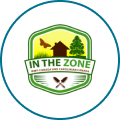
Tracked in southwestern Ontario through our In the Zone Garden Tracker.

Identified across Canada that can deliver the most at-risk species protection and the most carbon storage to help Canada achieve its 17 per cent terrestrial target.

Expanded Kids’ Run for Nature with more than 2,200 youth and 400 volunteers participating in 27 communities across Canada.

Teamed up with property management companies to keep over 1.3 million kgs of salt from entering our waterways.
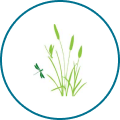
Led 21 educational and awareness programs through Biopolis to promote urban biodiversity.
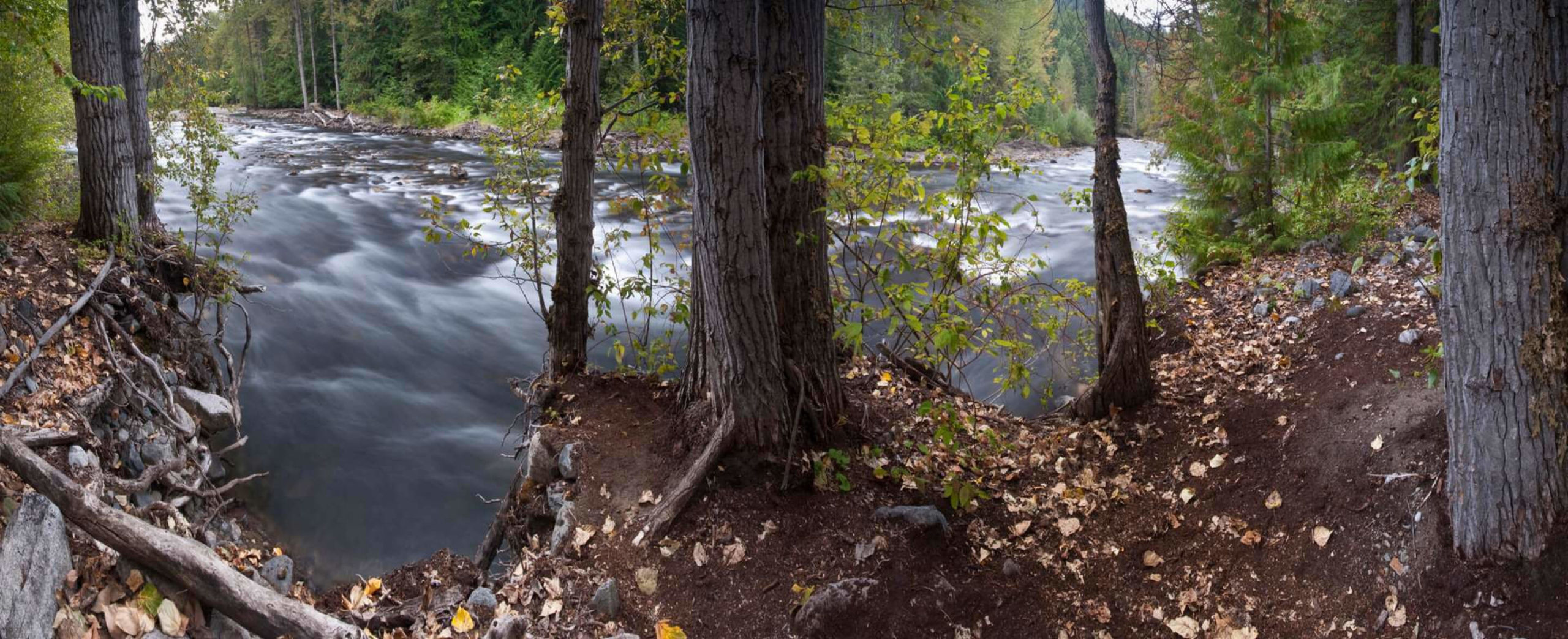
Nature, when adequately protected, can provide solutions needed to combat climate change and biodiversity loss. At WWF-Canada, we are dedicated to finding new ways to keep carbon stored above and below ground.
“The climate crisis is a fight for our future — and nature is our most important ally. Nature-based solutions reduce emissions by capturing carbon in forests, grasslands, coastal regions and wetlands that would otherwise escape into the atmosphere.
Healthy ecosystems, in many areas made stronger by Indigenous knowledge and leadership, also support resilience to climate impacts that have already begun such as flooding, fires, extreme weather and desertification.
We can, we must — and at WWF-Canada we will — fight the climate crisis with nature.”
Mary MacDonald, Senior VP and Chief Conservation Officer

“By using the best available data to map carbon for soils, peat bogs and forest biomass, we are able for the first time to present a conservative estimate of the power of nature in Canada to help keep climate change in check – while providing benefits for wildlife. Nature could be one of the most powerful tools in the fight against climate change, and it’s been largely overlooked”
– James Snider, Vice President of Science, Research and Innovation
Just as we need housing, wildlife needs somewhere to live and loss of habitat is one of the main reasons half of Canada’s monitored species have declined by an average of 83 per cent. In fact, 84 per cent of habitats with high concentrations of at-risk species (at least 10) are either inadequately or completely unprotected. At the same time, three-quarters of Canada’s carbon sinks that sequester and store carbon in soil or forest biomass are either inadequately or not at all protected.
WWF-Canada’s Wildlife Protection Assessment used cutting-edge science to map five priority areas in Canada that are currently unprotected but play dual roles in safeguarding at-risk species and storing carbon. These areas, which include wetlands, peat bogs and forests, are comprised of the Territories, Okanagan, prairie grasslands, southern Ontario and Quebec, and the Saint John River Watershed.
This is the first time these areas have been assessed for their potential to fight climate change and reduce biodiversity loss. The results of this report will help inform future conservation efforts.

The Arctic is warming at three times the global average, which is drastically impacting wildlife and the people who depend on them. With your help, WWF-Canada is working to create solutions that will help to build a healthy future for the Arctic.
“The disappearance of sea ice threatens the very existence of ice-dependent wildlife and Inuit communities that rely on them for food, livelihood and cultural survival.”
Paul Okalik, Lead Specialist, Arctic conservation, WWF-Canada

Each year, WWF-Canada joins government researchers, Canadian universities and the community of Pond Inlet for narwhal camp — an annual research expedition to learn more about narwhal and other Arctic species — including the mysterious Greenland shark.
In fact, during last summer’s camp in Tremblay Sound, Nunavut, 34 sharks were outfitted with tags to enable us to learn more about their movements throughout the Arctic Ocean. Although we’ve tagged Greenland sharks in the past, which helped us to discover that some will travel from Nunavut all the way to the icy waters of Greenland, this year was special. In a global first, the team was able to measure the metabolic rate of this slow-moving species, which could help us better understand their incredible lifespan.

Our Arctic Species Conservation Fund, made possible through the generous support of the Alan and Patricia Koval Foundation and Lindt & Sprüngli (Canada), Inc., is making incredible strides for Arctic wildlife. This year, we:

WWF-Canada spent more than a decade pushing for the protection of what we coined “The Last Ice Area,” a High Arctic region above Canada and Greenland, where it’s projected that ice will persist the longest as climate breakdown continues. This year, a large portion of The Last Ice Area was designated as an interim Marine Protected Area, and coined “Tuvaijuittuq,” an Inuktitut word for “the place where the ice never melts”.
Thanks to the support of our donors, including Coca-Cola Ltd. and the Gordon and Betty Moore Foundation, we helped create a long-term vision for this region by bringing relevant science and Indigenous Knowledge together and supporting Inuit-led conservation.
This hard work paid off when the leadership of the Qikiqtani Inuit Assocation, along with our advocacy, paved the way for the federal government to declare Tuvaijuittuq, a 319,411 sq. km part of The Last Ice Area, an interim Marine Protected Area while also cementing protected status for nearby Tallurutiup Imanga. This decision helped the Canadian government surpass its commitment of 10 per cent marine protection.
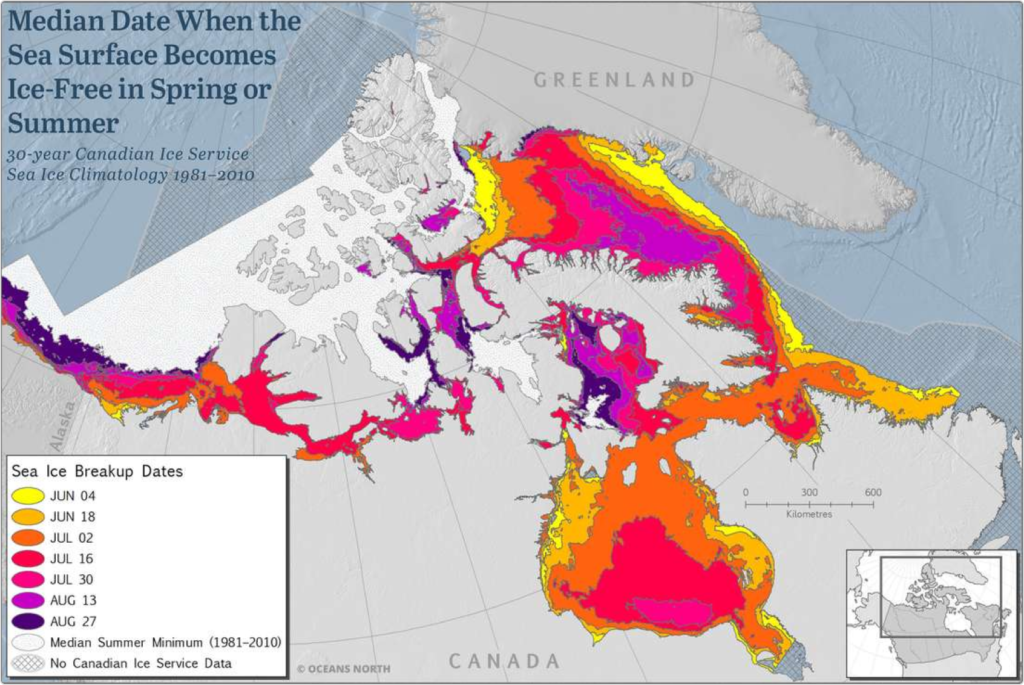
Available in English, French and Inuktitut, the Atlas has been distributed to over 200 northern schools, Inuit organizations, decision-makers and non-profit organizations. It can also be downloaded for free at wwf.ca/reports.
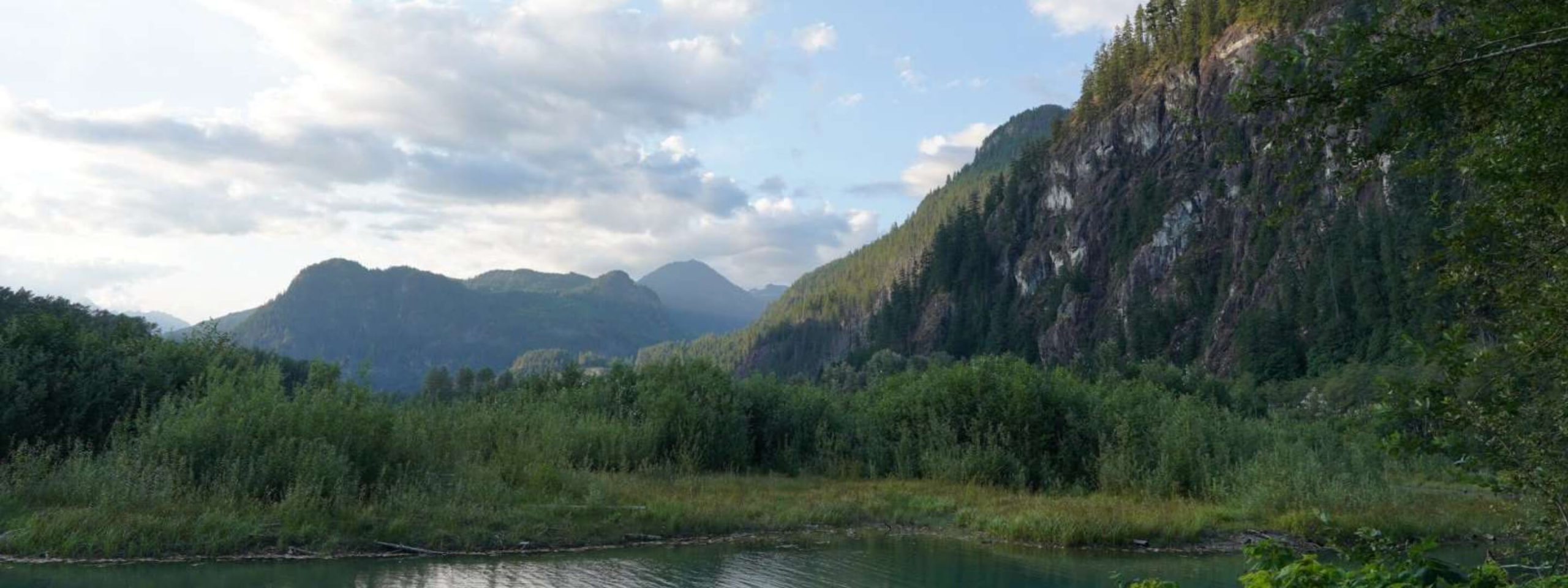
WWF-Canada is working towards a future where all Canadian waters are in good condition by building water resilient communities, bringing big water data to decision-making tables, and creating a culture of water stewardship across the country by collaborating with governments at all levels, Indigenous communities, researchers and local communities.
GRANTING PARTNER From 2014 to 2019 Loblaw Companies Ltd. granted $1.57 million through Loblaw Water Fund to 73 projects, engaging over 18,000 Canadians and planting over 95,000 native species.
“All waterways deserve protection in Canada, whether they are the wild rivers of Canada’s North or the beleaguered rivers in our heavily populated and developed South. Now is the time to restore lost oversight, and we look forward to working with Canada’s government to do so.”
Elizabeth Hendriks, Vice-President, Freshwater, WWF-Canada
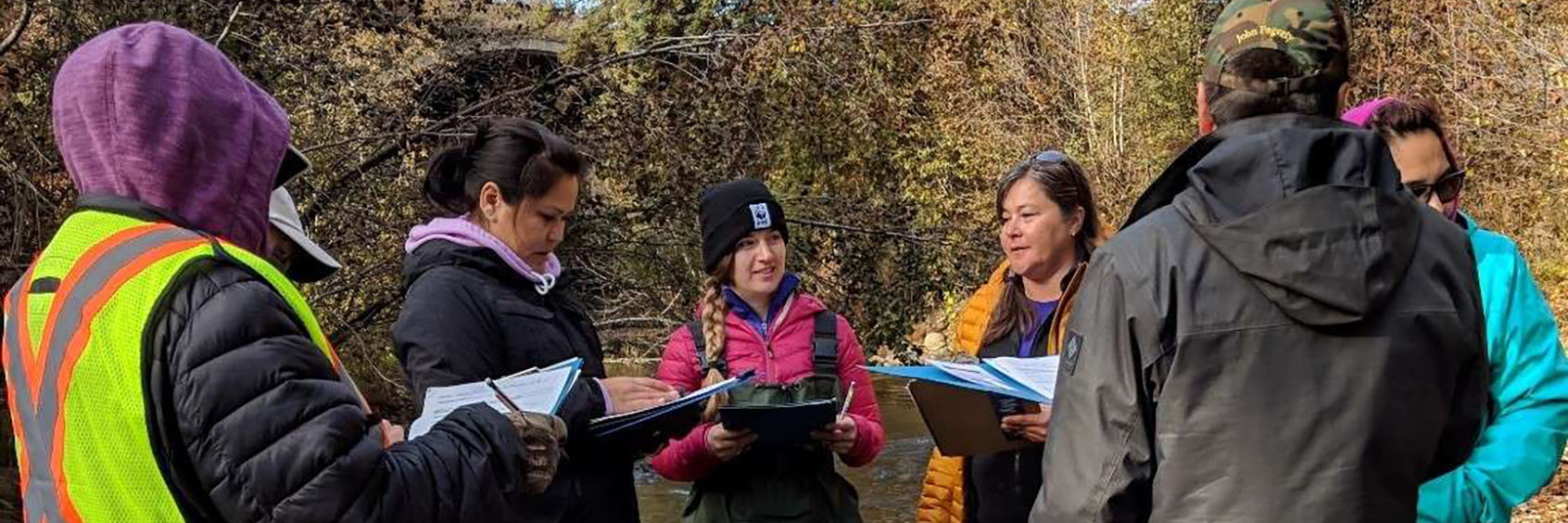
WWF-Canada spent August working with the Dane Nan Yḗ Dāh Guardians of the Daylu Dena Council and Dease River First Nation to expand their Guardian program to better understand the impacts of increasing resource development and recreation on their waterways, including the mighty Liard River. Our partner, Living Lakes Canada, trained guardians in Environment Canada’s Canadian Aquatic Biomonitoring Network protocol. This is a standardized technique to ensure results can be compared against communities upstream and down.
Together, we took bug samples and measured water quality, depth, velocity, and rock size. It was good news — the abundance of pollution-sensitive caddisflies in our samples indicated the water is in good health. This information will help us narrow the gap in data regarding the health of our watersheds and allow us to make better decisions for future protection.
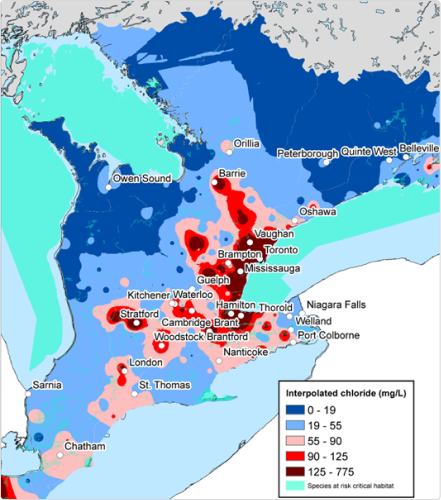
In June 2019, we released WWF-Canada’s Great Lakes Chloride Summer Hot Spot Map, part of our #LessSalty campaign, to track chloride in southern Ontario waterways and identify areas with the highest levels, including Greater Toronto, Stratford, Barrie and Kitchener. These maps, supported by Environment and Climate Change Canada, will inform policy recommendations to the provincial government.

Citizen scientists are individuals like you who are helping to monitor their environments. The data they gather for our environmental DNA program analyzes samples to understand an area’s overall health and inform future conservation decisions.

At WWF-Canada, we’re engaging people across the country to take action for nature. Whether planting a native garden for pollinators or promoting sustainable actions on campus, our programs are helping thousands do more for wildlife.
“It’s important to recognize the role that nature plays in sustaining us — and commit to doing our part to sustain it. WWF-Canada is proud to help thousands of Canadians connect more deeply with their environment because when nature thrives, so do our communities.”
Sarah Winterton, Director, Nature-connected Communities, WWF-Canada
What we plant matters. When gardeners choose native plants, they’re helping grow healthier landscapes for communities and for wildlife. WWF-Canada’s In The Zone program helps and inspires people to look at their gardens and green spaces differently: as potential habitats for bees, butterflies, birds and other wildlife.
Over the past year, we unveiled the In the Zone plant tag, in partnership with Carolinian Canada, to make it easier for gardeners in southern Ontario to purchase native plants. We also participated in over 15 outreach events, including Canada Blooms in the spring where 1,000 people registered to participate in In the Zone.
Our In the Zone Garden Tracker, an online citizen-science tool, is now in its third growing season, tracking 2,710 gardens across nearly 28,000 hectares. The data gathered on native plants, pollinators, other wildlife and sustainable gardening practices helps us demonstrate the impact of In the Zone at a landscape level.

Canada has the longest shoreline of any country in the world, and WWF is working hard to engage and empower individuals to help protect it.
The Great Canadian Shoreline Cleanup program is a partnership between Ocean Wise and WWF-Canada, and presented by Loblaw Companies Ltd. and Coca-Cola Ltd. The 2018 results are impressive: 2,074 Great Canadian Shoreline Cleanups involving over 61,631 registered participants who collected 116,429 kilograms of litter along roughly 3,397 kilometres of shoreline.

Developed in partnership with 11 post-secondary institutions, WWF-Canada’s Living Planet @ Campus engages students across the country to enhance biodiversity and related actions to help nature thrive. Students can personally lead change during their campus experience and achieve Living Planet Leader certification, which recognizes their knowledge of and experience in the practice of sustainability, preparing them to lead change in their communities and professions.
From coast to coast to coast, we’re helping individuals make a difference for nature. Go Wild Community Grants, presented by TELUS, are helping thousands of individuals connect with nature and take action to protect Canada’s incredible natural riches, diverse wildlife and varied ecosystems.
Throughout the past year, Go Wild Grants funded $107,292 to 26 projects across seven provinces and one territory.
These community-led projects have helped restore habitats for and monitor populations of monarch butterflies, bees, turtles, grizzly bears, bats, chimney swifts, sea stars, shorebirds, freshwater wildlife and more.

Canada has the longest coastline in the world, bordering the Pacific, Arctic and Atlantic Oceans. WWF-Canada is working to change the tide and drive protection and sustainable management so that these oceans have a vibrant future.
“The ocean is our planet’s life-support system so any threat to the health of the ocean, in turn, threatens us all. That’s why WWF-Canada wants to see bold action on climate change alongside real measurable protections for marine habitats and species.”
Sigrid Kuehnemund, Vice-President, Oceans, WWF-Canada

This summer, the field team for the Ships, Whales and Acoustics in Gitga’at territory (SWAG) Project were out fixing and replacing hydrophones that record and analyze whale calls around Hartley Bay, B.C. The project uses these recordings along with land-based visual observations to track whales and monitor their behaviour in the presence of boats and ships. It also utilizes artificial intelligence (AI) to differentiate between the calls of orcas, fin whales and humpback whales.
The goal of this project is to track whales and vessels in real time and collaboratively develop ways to manage marine traffic so that risks to local whale populations are reduced as commercial shipping increases from industrial development. SWAG is a partnership of The Gitga’at Nation, North Coast Cetacean Society and WWF-Canada.

After two years of diligent advocacy, WWF-Canada was thrilled with the federal government’s move to adopt minimum standards for federal marine protected areas, which includes a ban on oil and gas exploration, mining, dumping and bottom-trawling.
This ensures that the newly protected Laurentian Channel, which would have still allowed oil and gas activities in most of the protected area, will now have higher standards thanks to Canadians standing up to this type of development. These higher standards for marine protected areas will ensure critical habitats remain uncompromised by damaging human activities.

In the Salish Sea, forage fish like Pacific sand lance and surf smelt use beaches along the coasts of B.C. to spawn. They are an essential part of the marine ecosystem and act as prey for Chinook salmon, which in turn feed the endangered southern resident killer whales. But there is relatively limited research to understand the behaviour of forage fish and the habitats they need to feed and reproduce.
But we do know that the impacts of climate change combined with shoreline development are diminishing the quantity and quality of spawning habitats. So, with the support of the Sitka Foundation and Dragon Fire Charitable Foundation, WWF-Canada and our partners sampled over 43 potential spawning beaches within B.C.’s Salish Sea.
With help from more than a hundred volunteers, we identified 19 beaches used for spawning by Pacific sand lance. With this data, we’ll continue to expand our network and identify beaches in need of restoration and protection so that we can ensure the future health of forage fish populations and the entire marine food web that they support.
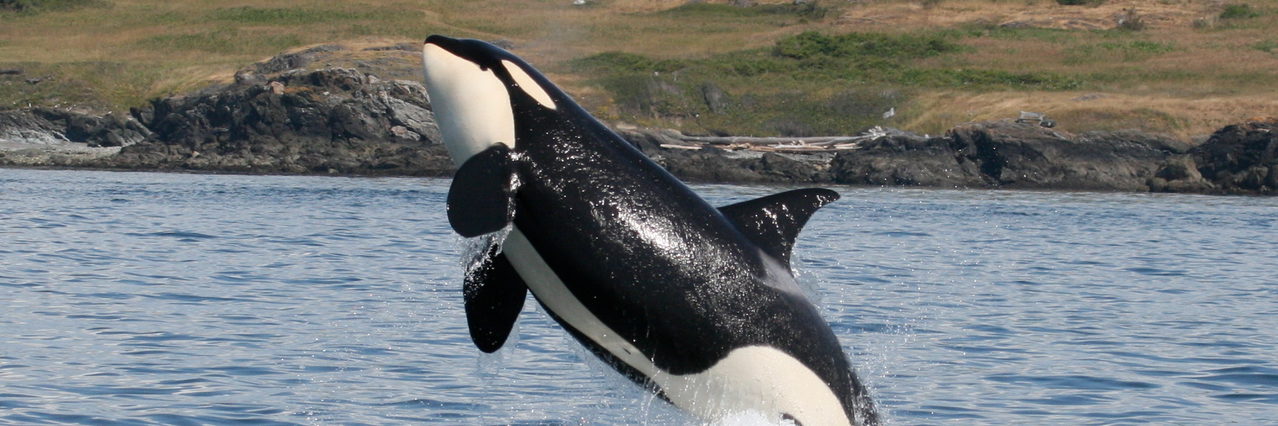
WWF-Canada, with a coalition of six conservation groups, continued to advocate for measures to support the recovery of the critically endangered southern resident killer whales. These included whale-watching restrictions for southern residents, expanded voluntary slowdowns for ships to reduce noise and the creation of no-vessel and no fishing zones in feeding areas. In May 2019, the federal government announced the implementation of these new protections for the 2019 season – a decision commended by WWF-Canada. We continue to work with our partners to assess the impact of these measures and to advocate for additional measures in 2020 that will more effectively protect the remaining 73 whales.
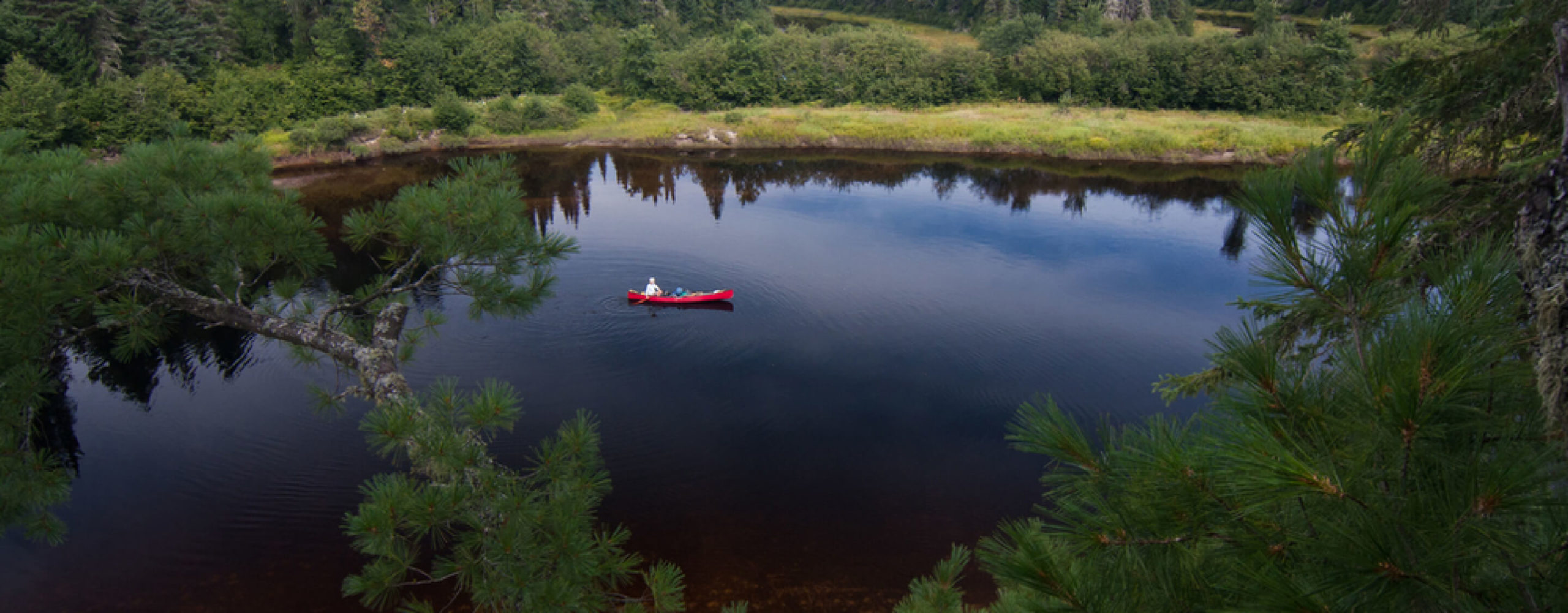
WWF-Canada’s Quebec program has two objectives: creating conservation and mobilization projects in Quebec and communicating WWF-Canada’s work in French. The Quebec program supports wildlife, habitats and ecosystems native to the province, and is focused on developing WWF-Canada’s urban expertise and building resilient communities through urban and aquatic biodiversity projects. This program also works on shipping and protected areas connected to the St. Lawrence River, from the Great Lakes to the Gulf of St. Lawrence.
“After the severe flooding experienced by several Quebec municipalities in 2017 and 2019, it is clear that we need to acquire tools that will improve our communities’ blue resilience in the face of climate disruption. It is a social, economic and nature-based approach that WWF-Canada intends to bring to cities across the country. It will also benefit the biodiversity and connectivity between ecosystems, from North to South.”
Sophie Paradis, Director, Quebec Program, WWF-Canada
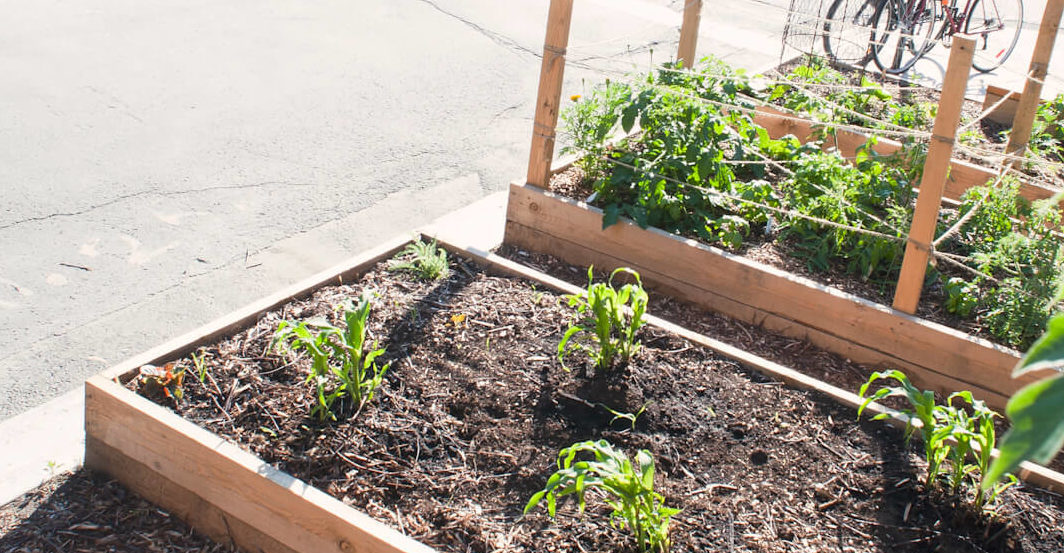
Biopolis is the first urban biodiversity hub in North America. It’s a digital platform designed to share knowledge, projects and expertise encouraging individuals to partake in urban projects promoting the health and sustainability of native species. Since launching in Montreal in December 2016, this informative platform has grown from 40 to 75 projects. As the need expands to measure our environmental impact by protecting and restoring nature in our urban areas, WWF-Canada is on the forefront of developing the first urban biodiversity indicators for Canada.
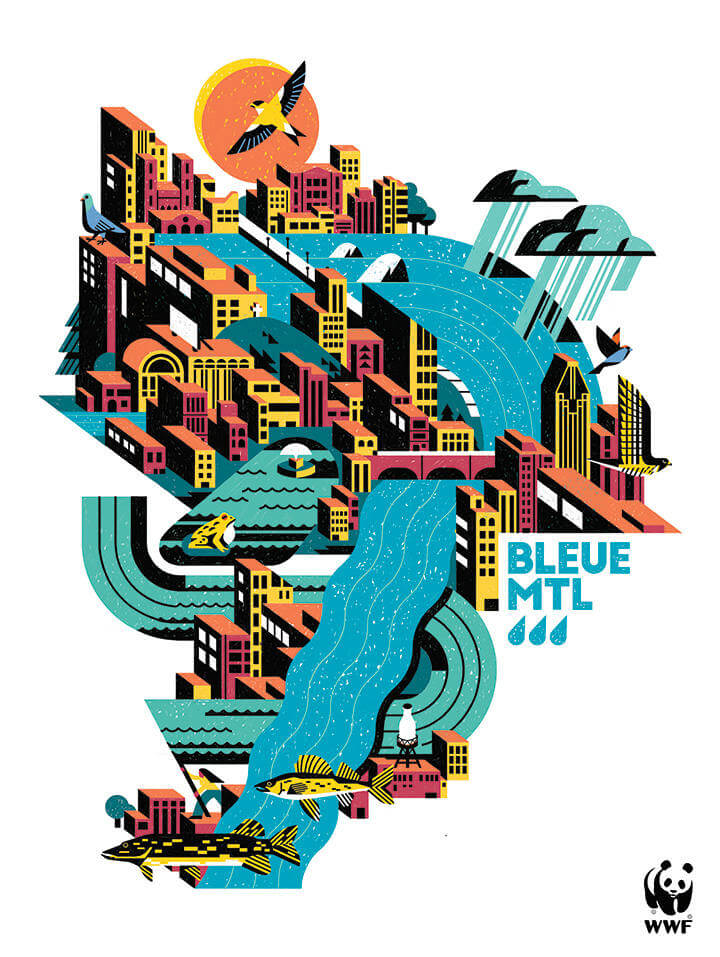
Through Blue Montreal, and with the support of Intact Financial Corporation, WWF-Canada is aiming to breathe new life into Montreal’s aquatic ecosystems, return water to its rightful place in the urban landscape, improve water management and strengthen resilience to climate change. Three boroughs have already been targeted with proposed revitalization work, including bringing underground rivers back above ground, building new urban rivers and developing blue alleys (laneways designed to better manage storm water runoffs, among other things). This past year we completed feasibility studies at three potential sites in Montreal, which will also be used as examples for our Blue Resilience Research Action Centre – on track to be built next year.

Stephen Hutchinson
CFO & SVP Operations
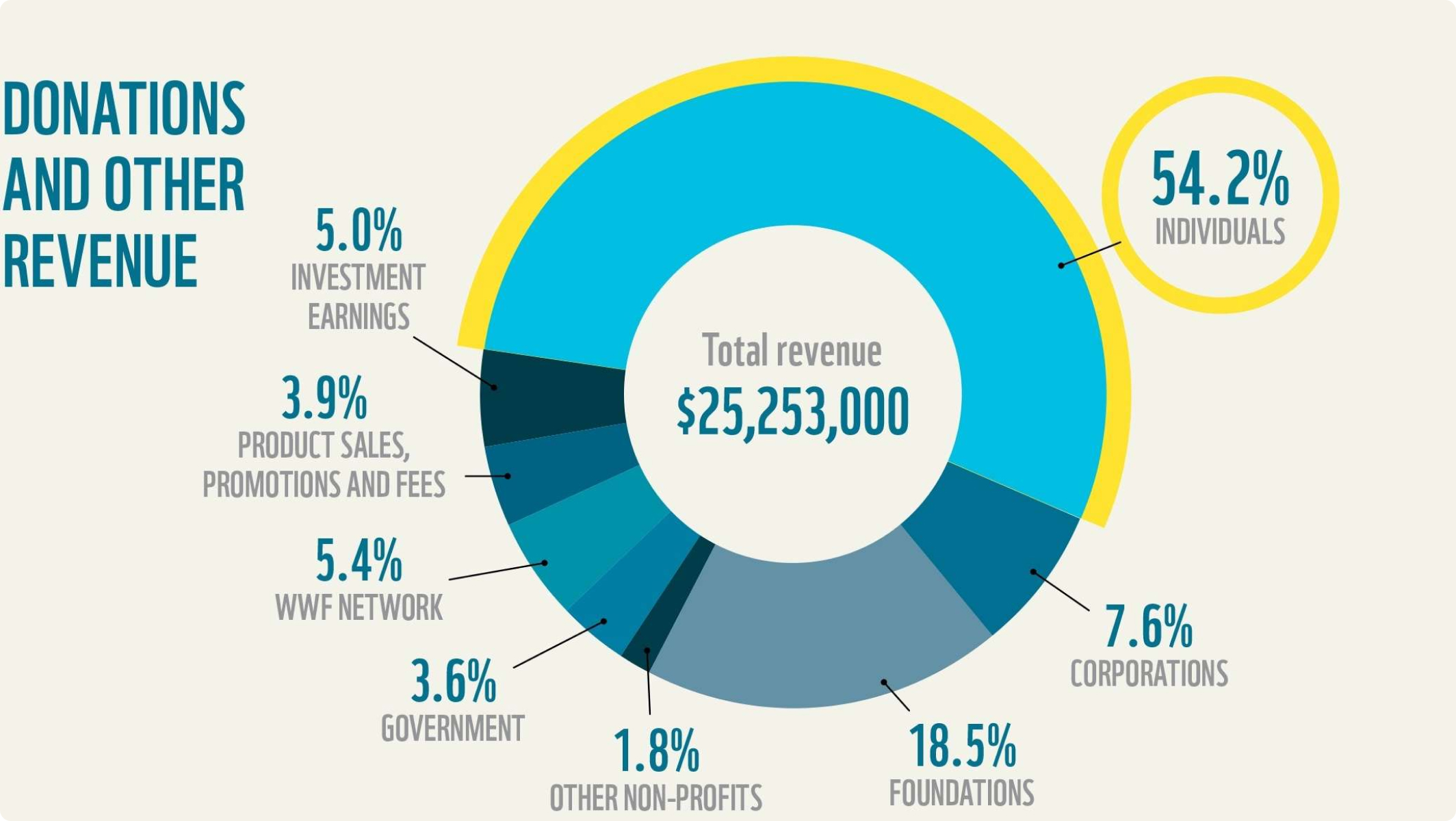
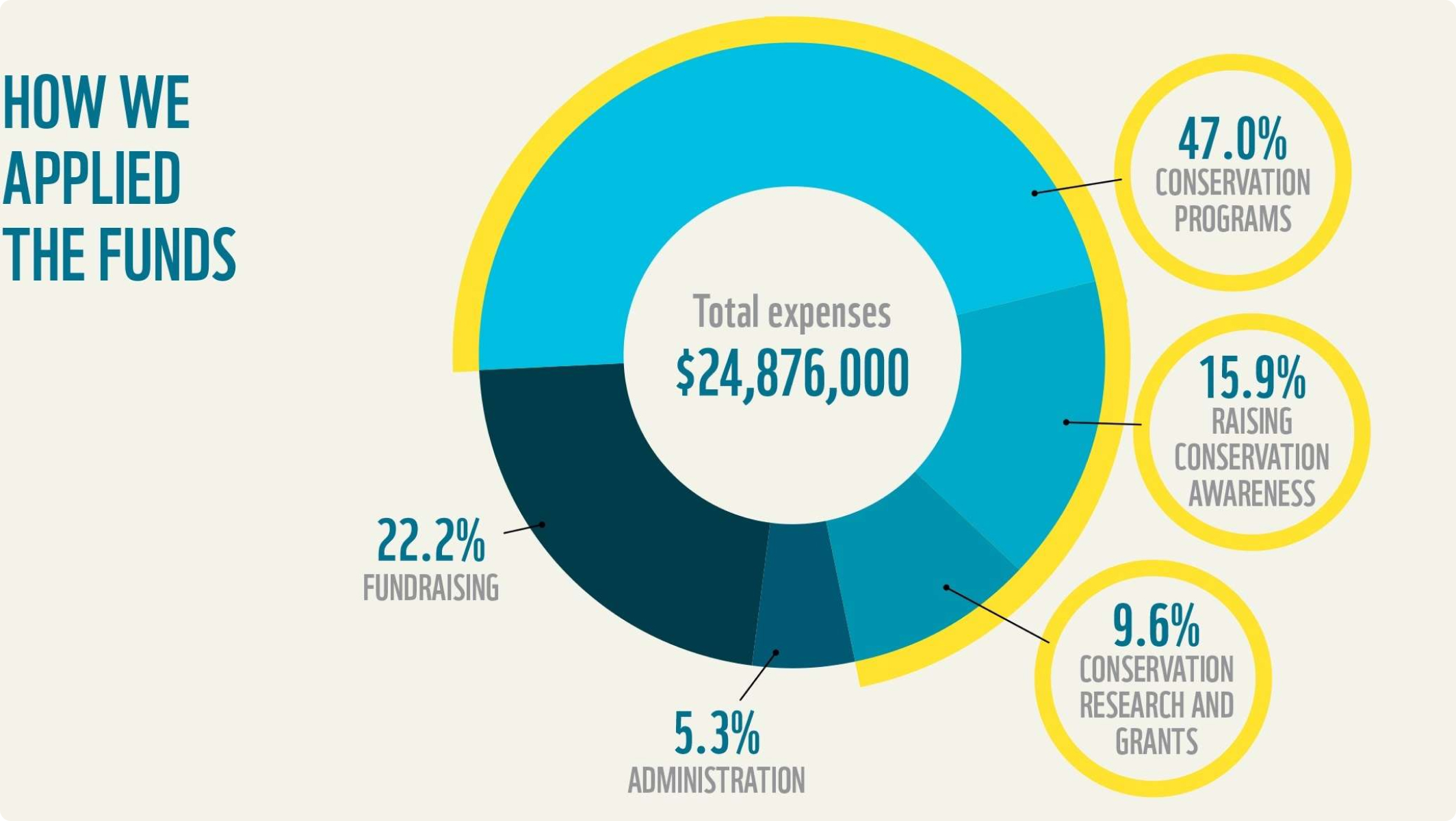
With gratitude, we are pleased to recognize those who have included a future gift for WWF-Canada in their Will or estate plan, joining more than 1,750 other committed members of WWF-Canada’s Legacy Circle. 143 additional donors preferred to remain anonymous.
WWF-Canada’s Legacy Circle
WWF-Canada’s work is made possible through the generous contributions of individual donors, corporate partners, foundations, government and other organizations . We are deeply grateful for your trust and commitment and appreciate your role in our achievements over the past year. Thank you for your gift to nature and for believing in our mission to build a future in which people and nature thrive.
Please click below to see our list of donors who made a generous gift of $1,000 or more.
Gordon and Betty Moore Foundation
• Fisheries and Oceans Canada – Coastal Restoration Fund
• Patrick and Barbara Keenan Foundation
• Loblaw Companies Limited°
• Coca-Cola Ltd
• Intact Financial Corporation
• Rosamond Ivey
• Alan and Patricia Koval Foundation
• Kimberly-Clark Canada
• Lindt & Sprüngli (Canada), Inc.
• Oak Foundation
• Rogers Communications°
• RSA Canada*
• The Salamander Foundation
ESTATES:
• Estate of Sonja Bata
• Estate of Doreen Elsie Curry
• Estate of Keith Dennis Downey
• Estate of Deborah Wallin
• Cedar Valley Holdings Inc.
• The CSL Group
• Donner Canadian Foundation
• Government of Canada – Environment and Climate Change Canada
• Environment and Climate Change Canada – EcoAction Community Funding Program
• Nissan Canada Foundation*
• Oceans North via Seablue Canada
• Sitka Foundation
• Mr. Gary Slaight
• University of Victoria
• William Weselake
• Patrick Winder
ESTATES:
• Estate of Frank Brookfield
• Estate of Mona Louise Campbell
• Estate of Ursula Maria Easterbrook
• Estate of Michael Charles Eggett
• Estate of Gerta Mae Grieve
• Estate of Arlene Muriel Kinsley
• Estate of Stefania Knop
• Estate of Sandra Joyce Sharp
• Estate of Marjorie Vivien Smith
• Estate of Dulcie Eleanor White
• Altitude-sports.com
• BMO Financial Group°
• Bullfrog Power
• DAVIDs TEA°
• Michael and Honor de Pencier
• Domtar Inc.+
• Fisheries and Oceans Canada – Canada Nature Fund for Aquatic Species at Risk
• Gartley Family Foundation at Toronto Community Foundation
• Claude Giffin
• Patrick A. MacDonald
• Laurence Metrick
• Mill Street Brewery
• John and Sheila Price Family Fund
• The Printing House Limited+
ESTATES:
• Estate of Suleman Currim
• Estate of Robert Falconer
• Estate of Joseph Koenig
• Estate of Patricia Anne Thomas
• The Airlie Foundation
• Apple Inc.
• Karen and Bill Barnett
• Mary Scott-Campbell and James D. Campbell
• Kathleen Carrick
• Marilyn Cook
• David R. E. Cooper
• Copernicus Educational Products
• Mr. Bob and Mrs. Gayle Cronin
• Aqueduct Foundation- Jeanne Edwards Fund
• Emaral Investments Inc.
• Ministry of the Environment, Conservation and Parks
• Guru Gobind Singh Children’s Foundation
• Lynn and James Haight
• Holt Renfrew & Co. Limited
• Donna Holton
• HP Canada
• Richard M. Ivey
• The Norman and Margaret Jewison Charitable Foundation
• Arthur and Sonia Labatt
• Laurentian Bank of Canada
• Margrith Loretz
• Joyce Martin
• Mr. David Martin and Mrs. Laurence Duguay
• Patricia, Curt and Daniel McCoshen
• Catherine and Maxwell Meighen Foundation
• Micrylium Laboratories Inc.
• Pierre Morrissette
• Robert G. Neilson
• New Roots Herbal Inc.
• Parks Canada Agency
• Procter & Gamble Inc.
• Mr. Christopher Richter
• Mr. Robert Sherrin
• Meenakshi Sibal
• Roy and Kerry ValESTATES:
• Estate of Kathleen Eleanor Blok
• Estate of Phylis Dorothy Festing
• Estate of Don Peter Globa
• Estate of Irene Kouwenhoven
• Estate of Emily H. Malnerich
• Estate of Marie Angela Rooney
• Estate of Margaret Jane Rosettis
• Estate of Verna C. Scanes
• Estate of Beata Irene Thau
• Beam Suntory
• Bentall Kennedy (Canada) LP
• Anne-Marie Boucher
• Fion Wing Fo Cheng
• Cinders Fund at Edmonton Community Foundation
• Marna Disbrow
• Kevin Doyle and Michelle Koerner
• Dragon Fire Charitable Foundation
• The Elvetham Charitable Trust
• Government of Nova Scotia – Economic and Rural Development
• Friends of the Greenbelt Foundation
• Elizabeth Haan
• Kevin Hearne
• HSBC Bank Canada
• Graeme Hutchinson
• Insurance Bureau of Canada*
• Kevin Jewison
• David and Sandra Johnson
• Anna McCowan-Johnson and Donald K. Johnson, O.C., LL.D.
• Klick Inc.
• Brian and Joannah Lawson
• Megan Leslie
• LGL Limited Environment Research Associates
• Livingston International
• Stephanie Mah
• The McLean Foundation
• Donald McMurtry
• Susanne McRae
• Mr. & Mrs. S. Mehta
• Dieter W. Menzel
• Noella M. Milne
• Steven Minuk
• Northbridge Financial Corporation
• The One Love Foundation
• Ontario Power Generation Employees’ and Pensioners’ Trust
• Pelmorex Media Inc.+
• Anne Marie Peterson Legacy Fund at The Calgary Foundation
• Projeny Inc
• T. Quinsey
• Keith Beckley and Martha Richardson
• Kathleen Richardson
• Margot L. Ritchie
• The Rix Family Foundation
• George Shapiro Fund at the Strategic Charitable Giving Foundation
• S. J. Skinner
• Ed Stahl
• Janet Ruby and Mary Thomson
• Sarah Watson
• Mrs. C. Watson
• Davidah Wolf
Note: A plus sign (+) following a name recognizes in-kind donations. A degree symbol (°) following a name recognizes cash plus sponsorship and/or in-kind donations. An asterisk (*) following a name recognizes sponsorship donations. Gifts received after June 30, 2019, will be gratefully acknowledged in the 2020 Annual Report.
Help protect threatened species and their habitats.